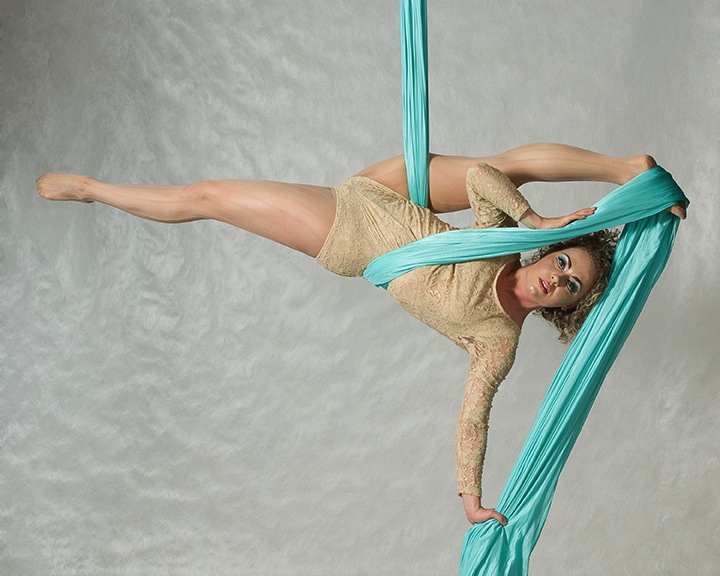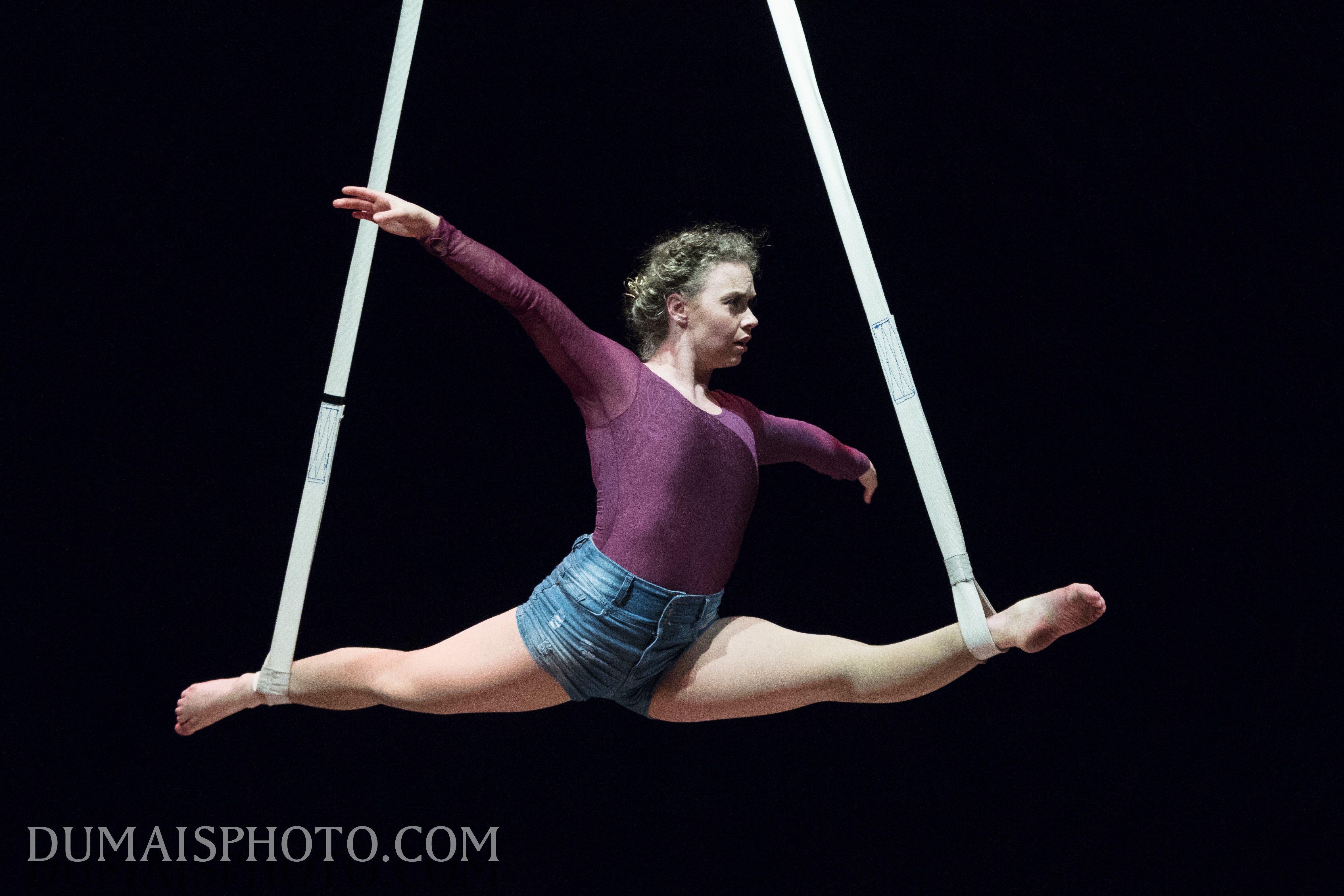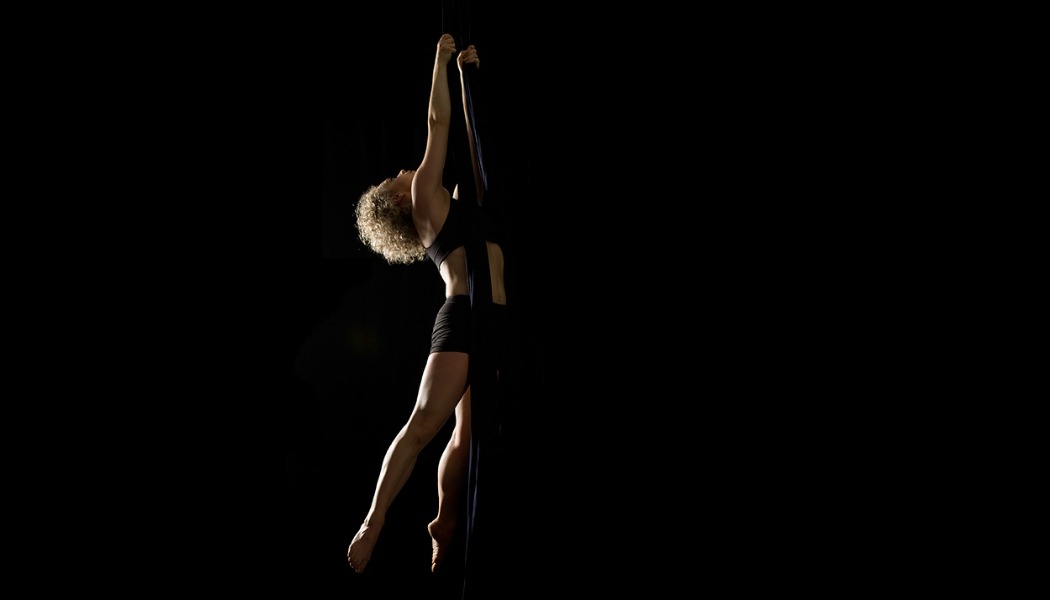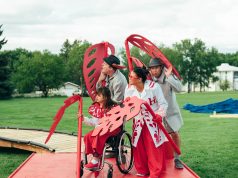
I have been having an affair… I’ve been cheating on theatre with the circus. I began training in aerial circus (a method of movement in which the artist performs high above the audience suspended by different types of equipment) almost 10 years ago. In 2013 I put my career in theatre on hold and immersed myself exclusively in the world of circus. While I loved the rigor and discipline required to perform circus, I deeply missed connecting with character, text and story. Each discipline held a place in my heart and there was no point in keeping them separate any longer. Now, both circus and theatre are integral parts of my creative process. Instead of placing boundaries between my disciplines, one supports the other.
I decided to make my ménage-a-trois relationship with circus and theatre public 2 years ago when I began creating a solo show titled Persephone Bound – a multidisciplinary theatre performance that has a conversation with young people about sexual consent. I chose to tell this story using the circus apparatus “aerial straps”. Traditionally, aerial straps are used for conditioning and performing feats of strength. The loops at the end of the 9 feet long cotton covered polyester straps are used for the circus artist’s wrists so that he/she can hang, twist, and suspend in the air. In Persephone Bound I created a custom pair of straps, with loops wide enough to allow me to hang from different body parts (knees, torso, neck), and integrate more of a dance vocabulary. The effect of the straps in the play is very profound; from the moment Persephone is assaulted she remains attached, or bound in the straps, just as she is bound to her experience as a sexual assault survivor.

Virtuosic movement is a demonstration of skill; a movement that the audience sees that they recognize as difficult, or that they themselves can’t do. Circus is almost entirely made up of virtuosic movements. When creating Persephone Bound we were constantly asking ourselves: “Does this movement help to tell the story?”. Sometimes the ego comes in and tempts you force a movement into the performance simply because it is difficult to execute – because it’s impressive. It’s important to take a step back and ask yourself if the movement is enhancing the story or only bolstering your self-esteem. One way I found helpful to overcome this tendency was to examine how I was discovering the movement. Instead of superimposing a movement (randomly doing a cool trick without any other purpose or reasoning), I would use various movement improvisation exercises such as Authentic Movement and Viewpoints as entry points to map the physical journey of the character on the circus equipment. This opened up my mind and body to new physical possibilities, which in turn were more genuine.
Another technique is to link the movement to a feeling or an emotion. It is common when doing a virtuosic movement to block out the feeling and to let the brain take over. This is especially true with circus for two reasons. Safety is top priority. You need to make sure that what you are doing is safe and that takes concentration. In Persephone Bound there is a part where I am lifted in the air by my neck. When I execute this movement need to make sure that I am engaging the right muscles, and placing the equipment in the right place so that I don’t seriously injure myself, or fall. The second reason why circus artists might not consider the way a movement feels is because the circus equipment is often very painful, and you must train yourself not to feel the pain in order to keep going.
For a virtuosic movement to appear rooted in a character it’s very important that the performer feels the movement. How does my body connect with the ground? How does the pain of this movement inform my character? When the performer connects with the feeling of the movement the audience is more likely to go along for the ride.

We discovered the phenomena of saying one thing, and doing another by creating a movement sequence where the character of Persephone is refusing a drink, eye contact and physical contact with her aggressor, Hades, but in the monologue she expresses how much she is attracted to Hades. This contrast has a profound effect on the viewer, because they are able to read the internal dialogue of the character through the body.
My polyamorous relationship with circus and theatre has been one of great discovery and pleasure. Whatever tool is applied, whether it’s the way the gestures are developed, the feeling of the movement or the contrast the movement has with the text, virtuosic movement has the ability to enhance the theatrical experience. When presenting Persephone Bound audiences have told us that they are stuck by the dichotomy of strength and vulnerability the aerial apparatus conveys, and that the image of Persephone in the straps is striking, provoking and “like nothing they have seen before”. As collaborative creations and devised theater productions are moving more into the forefront, there is an opportunity to challenge the existing structure of theatre creation and embrace the heighten form of movement the circus offers. I love to tell stories, and I’m grateful that I’m no longer limiting myself to telling those stories through the traditional lens. Now, I can tell my stories in the air.
This October, Léda joins the cast of E.B. White’s Charlotte’s Web at Alberta Theatre Projects in the title role of Charlotte the Spider. She’ll use aerial silks as her character’s primary apparatus in this story of unlikely friendship, where having a big vocabulary can save the day. Charlotte’s Web runs November 21 – December 31, 2017.









